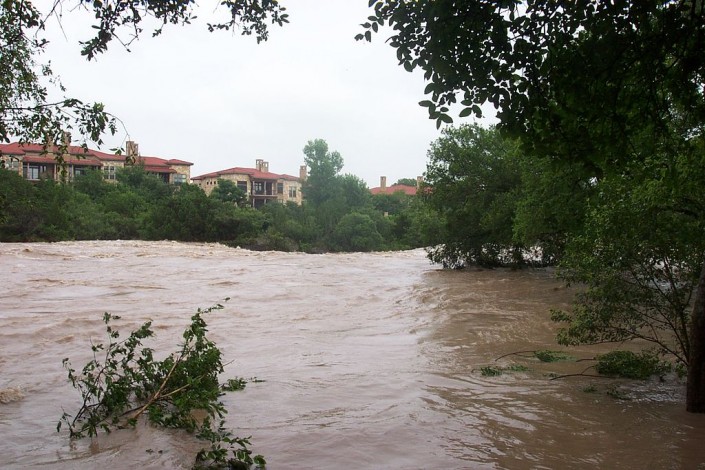‘Dead zone’ in Gulf of Mexico could grow much larger after record rainfall

Image: Wikimedia Commons
Record rainfall in Texas could soon create major problems for marine life and commercial fishermen in the Gulf of Mexico, a Texas A&M University oceanographer says.
Massive amounts of freshwater have poured into the Gulf during May and June. Rivers such as the Brazos, Trinity and Colorado are carrying record amounts of water flowing southward to the Gulf, similar to 2007 when rivers carried 10 to 20 times the normal seasonal rate.
Steve DiMarco, a professor of oceanography in the College of Geosciences, says this may cause coastal waters to become stratified: the lighter freshwater will stay on the surface and will trap seawater beneath it. When salt water is isolated from the atmosphere, oxygen levels begin to drop.
DiMarco says, “When this happens, it almost always means many marine organisms, particularly those that live near and at the ocean bottom, can’t get enough oxygen and they can get sick and die.”
Marine life for thousands of square miles can become distressed. This can lead to mass deaths. The technical term is hypoxia, but the more common description is “dead zone.”
Dead zones have occurred for decades off the Texas-Louisiana coastline, likely caused by nutrient pollution from farm fertilizers and other sources that empty into rivers such as the Mississippi and end up into the Gulf.
The record amounts of Texas rainfall this year could create a dead zone within a dead zone, DiMarco says: “Because it has the possibility to extend much further west than in typical years, the dead zone could be more intense and even much larger this year.”
The NOAA Center for Sponsored Coastal Ocean Research funds DiMarco’s investigation of the mechanisms that cause the dead zone of the northern Gulf of Mexico.

